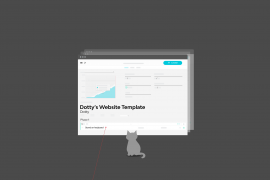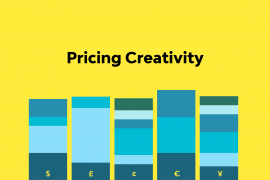While money isn’t the be all and end all, (and I hate hearing that it makes the world go round) there’s no doubt that pricing your work properly is essential.
I’ve had many chats over the years about pricing jobs. There are so many elements to consider. I’ve priced jobs based on how much I think the client can afford. I’ve priced based on a strict time and materials calculation. I even have to admit… I’ve wanted work on a job so much that I’ve just taken what the client has set as their budget and not questioned it. You know that one right? Then there’s your past experience with the client. Are they going to be good to work with or will they be high maintenance? Do you charge a premium hourly rate for anticipated high maintenance or just walk away? And then there’s the last minute job they need yesterday. You can’t spend as much time on it, but do you charge less or a stress-inducing, all hands to the pump, special fee?
Whatever your approach, I’ve worked out a few key principles for how to price consulting services, that have helped me to increase what I’ve charged clients over the years. I actually prepared these notes for a mentor session a couple of months ago, so thought they’d make a great blog post. Feel free to add your own suggestions below.
Know your agency pricing model.
Knowing your numbers isn’t just about knowing how much a job is worth. But, how much do you need to make to run a profitable business and have as happy a life as possible? What do you need to take home? If you’re a business owner, what do you need to prove that this is a business, not just a job? Therefore, what do you charge for social media, consulting services, marketing services, account management etc. I can recall stories of friends who have started businesses, end up paying themselves less than their previous salary, but have 10x the stress and anxiety of running a business and being responsible for other people.
So what do you need? Start with you first.
Then there’s tracking progress. Are the jobs you’re working on making money? Did you quote them correctly? Are you sticking to your quote? Is your client great at “scope-creeping” and getting a little more out of you? It’s not surprising. We’re a bloody nice lot in this industry – no matter if it’s digital marketing, content creation, advertising agencies or marketing agency – seems like we all have the same issue.
If you’re going to track time, then you need to track money. Yes, tracking time sucks. Although, we like to think we’ve made that 100x less sucky at Streamtime of course (smart ToDo lists).
Making the connection between time planned, time recorded, money estimated and money received is the golden formula for seeing if you are or aren’t making money. If you’re not tracking this, it’s going to be hard to work out what’s working and what isn’t when you get that dreaded call from the accountant.
Be strategic. Listen, adapt to and understand your clients.
1st – always get an idea of budget from your client. What do they think this work is worth to them? I know it’s a horrible conversation to have right off the bat, but it sorts out the tyre kickers from the tyre pumpers. If you are poles apart on what they’re willing to pay and what you need to make, you’re much better off trying to find another client than waste your time talking to the one in front of you. It’s not personal of course, and you can always refer them to someone more suitable.
I’ve learnt the hard way, and I still see creatives and agencies go through weeks of new business meetings, presentations and proposals to find out that the budget is tiny and it was all a big waste of time.
Talk about how they’d like to work. Do they prefer face to face, video calls, regular wip meetings, etc. and is their work project based? Show how that can affect the price.
2nd – what value is the work to them? What does success look like? What’s that worth? Weirdly, this is the harder conversation to have. It can be quite sobering. Really what you want out of this discussion is to understand how they’re going to judge your work. This sets you up for a good project. It allows you to come back to this measure of success or completion and use it as rationale in discussions around the merit of your work.
The level of value and importance to them is something you should absolutely factor into your pricing. You may have heard about the concept of value-based pricing. It’s a very hard formula to execute. I’m yet to see a creative business use it 100% effectively. I’d love to hear examples below if you have them. But just as important is you adopting the mindset that your work is valuable.
I can tell you that I’ve sat in new business meetings, listening to prospective clients, while making mental calculations of how much I believe a project is worth to them. Obviously, this takes time and experience but it starts with the right mindset. This book by Blair Enns is a great place to start.
You can help these conversations by showing past work and ballpark fees as an education on the entire process, not just the development of the assets that are handed over at the end.
Forget planning to run your studio at 90-100% utilisation.
I’m not trying to put a downer on things here. It just seems to be a reality. The reason it’s important in the context of pricing is that it affects how much you’re targeting to make in revenue each month. There are certain all some studios that do this very well. Those that are very process oriented, or who have templatable, repeatable work. Production companies, architects and the like have solid processes that don’t necessarily change too much from project to project.
However, (as you know) trying to put a time limit on creativity, or an idea is nigh on possible. Basically, you can give it a deadline, but how long it takes to get there is no easier than predicting how long it’s going to take my kids to get ready and out of the door in the morning.
At every studio I’ve ever worked at we’ve worked on utilisation rates of 80%. It certainly helps for planning, but the variance on this from project to project can be vast. I’m not saying give up on running good, efficient projects, but don’t beat yourself up when the numbers look a bit…. icky.
Overall, you have a certain amount of costs each month and each year. You need your revenue to be more than that, by a percentage that keeps you comfortable. Work out your pricing based on those numbers.
Charge for everything.
When was the last time you charged for a new business meeting? When did you charge travel time? Do you write it off as a cost of doing business? What about that ‘just one more presentation to the product team’ request from your client? Sure, it’s the same presentation, but you still have to get there and back, pay for a taxi, take time to prepare, probably debrief with your client after. That could quite easily be another $1600 worth of time that you could have charged for. You can prove it, if you’re tracking your time, and have a level of transparency and respect with your client (if you don’t, you’re probably better off without them).
Get paid as you go.
Getting your pricing right is only half the job. Getting paid (regularly) is the other half. If your project lasts longer than 4 weeks, then forget just invoicing at the end of the project. At a minimum aim for 50% up front. If your project goes longer, consider breaking it up into phases that have clear deadlines and approval points. Then, agree a payment schedule with your client and invoice at every step along the way. The holy grail, is to get paid for work as it happens – not dissimilar to how many other professional services work by the way.
Grow your pricing and price your services.
When I started my own business we started off doing small jobs. $500 fixed fee here, a grand there. It helped to get some cash in the door, pay for some setup costs and for the salary of our first employee. After 6 months, we wanted to hire more people and start to formulate a plan where (as founders) we would get paid as well. We started to see that we had to do A LOT of these small jobs to get anywhere near to the magic (getting paid) number.
We started to set minimum limits for projects. From a minimum of $5k, then to $10k and then quickly up to $20k. Finding bigger projects meant less admin and less time spent having to search for new clients. This isn’t greed by the way. It’s learning what you’re worth. You could liken it to the housing market and the age-old quote, “your house is only worth what the market is willing to pay for it.” If you do great work, have a great reputation and are always busy, you are worth a premium. The rest of your time before this point should be spent working up to it. And don’t forget to charge for Project Management.
Keeping track of what you planned and actually received for each project is a great way to evaluate your pricing. How did the amount of time you spent match up to your original quote? How are you making a note of this in order to get more accurate (or charge more) in quoting a similar job next time?
Pricing is hard. It’s a difficult conversation for anyone to have, but it’s one of the most important ones if you want to succeed. Remember success means the life you were hoping for. Not just the bottom line of your spreadsheet!
Happy pricing…









